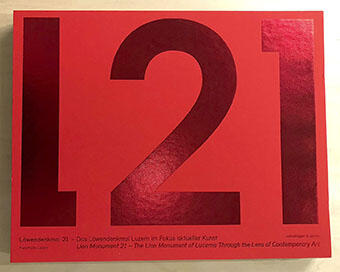
The cross-reading, the common and the choreographing of the political
Sabine Gebhardt Fink
published in Lion Monument 21 — The Lion Monument of Lucerne Through the Lens of Contemporary Art, Kunsthalle Luzern, Scheidegger & Spiess 2021/22
The cross-reading, the common and the choreographing of the political
The monument and its performative strategies in the 21st century
essay by Sabine Gebhardt Fink
Since the 1990s, critical debates surrounding the status of historical monuments have become virulent1 - especially in the wake of a de-colonialising practice and the quest for an inclusive culture of memory (Sternfeld 2018). To this end, various artists are establishing performative strategies, be it in the form of live acts or as digital interventions, which comment on the monuments and their ideologies2 in different ways. Of particular interest for this short essay are breaches in the tradition, i.e. everything that is not written about or that is rewritten. At the core of each breach is a performative statement: «énoncé» (statement), as Michel Foucault calls it in The Archaeology of Knowledge.3
Using artistic works as examples, I would like to explain three different «énoncés» here, which are central to this new understanding of a commented and commenting monument.4 I summarise these shifts from the traditional under the following three terms: the cross-reading, the common and the choreographing of the monument in a socio-political context.
It is precisely these forms of restating and rewriting that were the focus of the performativbe interventions that took place within the framework of the L21 project (Fig. A and Fig. B). The following series of pictures provides insight into the differen working methods and formats One example is the performance by Brigitt Bürgi, who worked participatively with the audience (Fig. C).
I now come to the topic of cross-reading and the «Letten Vernus» performance by Dorothea Rust5 in 2017 (Fig. D and Fig.E). This is an excellent example of how a 20th century monument can be cross-read through performative intervention. In this work, Dorothea Rust counteracts traditional role and gender images in the form of Venus stereotypes. Beginning with a Vernus Scultpure (by Hans Aeschbacher, 1955) in the Letten public swimming area in Zurich, the performance creates body images and other notions that deviate from those we know in modern art history. She begins with a bathrobe pulled over her head and in the course of the performance she provokes the visitors at the open-air swimming area ...
full text (in publication excerpt with table of contens and foreward)